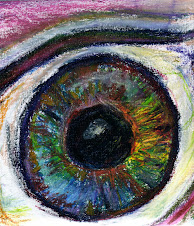Here is an activity that can help teach students how to overtly access their visual memory.
- Have the student close his eyes and describe from memory the items in the classroom.
- Ask whether there is an alphabet chart posted anywhere in the room.
- Ask the student to tell you from memory what color the chart is and what color the letters are. If the student does not know, give them an assignment to find out the next time they are at school.
- Ask whether your student can see a picture of that chart in their mind. Then ask how many "w's" are on it.
- Ask if the student can read the chart by looking at the mental image and find the letter that comes two before "q".
Here is a spelling activity to help students put visual material into their visual memory.
- Take any word on the spelling list. Perhaps you want to learn to spell picnic.
- Write picnic in neat manuscript letters as a model.
- Direct the student to trace the word with a pencil five times.
- Next tell the student to imagine that it is a very damp cold day. There is moisture on the car window. Tell the student to use her finger to write the word picnic on the window.
- Ask her if she can see the word on the imaginary car window. Then ask her to spell it by reading the letters from the window in her mind. Next, ask her to spell it backwards.





No comments:
Post a Comment